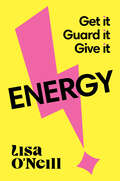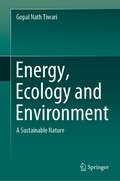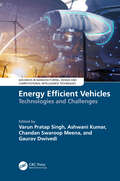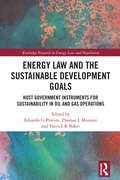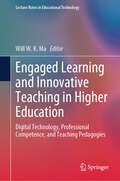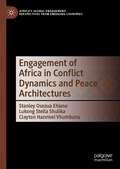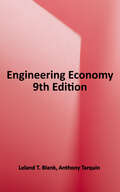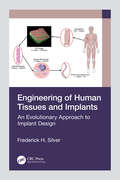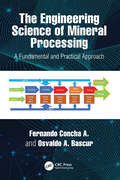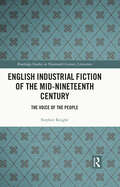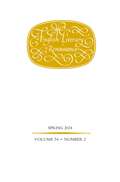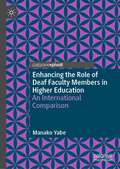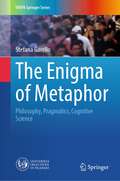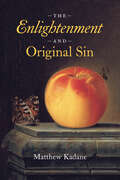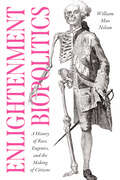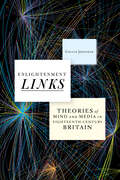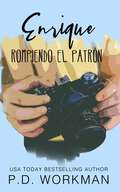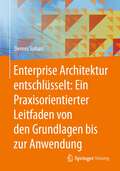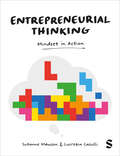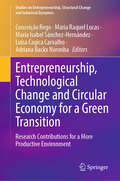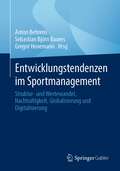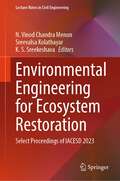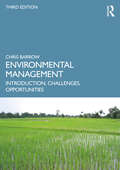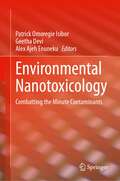- Table View
- List View
Energy: Get It, Guard It, Give It
by Lisa O'NeillTaking responsibility for your energy can change your life. Good decision to look me up. I love that you're curious! Do you ever meet people and say to yourself 'I wish I had their energy'? Instead, you're feeling completely exhausted, unmotivated – frankly, a little flat. Well, it's time to take back control. You are responsible for your energy. You need to understand what (and who) depletes your energy levels and find ways to recharge. That's where I come in! I'm brimming with ideas, information and actionable tips that will positively impact your energy instantly. Energy is physical, emotional, mental, spiritual – it's everything! I'll teach you how to get it, guard it and give it, and how you can improve how you feel, how you perform and how you're received. I'm so glad we found each other. You were wandering around looking for something to improve your life and BOOM, I show up! It's a sign. I like you. I think we're going to get along great. And, given that we are already friends, I think it's time for you to buy me so that I can start changing your life. Come on, what are you waiting for? Let's go!
Energy, Ecology and Environment: A Sustainable Nature
by Gopal Nath TiwariThis book covers topics related to climate change, weather, greenhouse effect, solar energy, various cycles including carbon, hydraulic, sulphur, renewable energy conservation, ecology and sustainable environment. The contents of the book include pedagogical elements, such as exercises, tables and figures at appropriate places in each chapter, including problems and objective questions at end of each chapter, to aid in learning. Further, the unit conversion from FPS system to SI unit of each parameter, namely length, energy, power, velocity and pressure force, etc, and some standard constants used in examples are also provided in the book. The book also includes discussion about renewable energy sources, namely solar energy, wind energy, biomass energy and geothermal energy, etc, their availability and eco-friendly nature. This book can be a useful reference for those in academia and industry.
Energy Efficient Vehicles: Technologies and Challenges (Advances in Manufacturing, Design and Computational Intelligence Techniques)
by Varun Pratap Singh Ashwani Kumar Chandan Swaroop Meena Gaurav DwivediThe text discusses energy-efficient vehicles as an essential element of sustainable transportation. The text highlights the social, economic, and environmental benefits associated with energy-efficient automobiles, which effectively solve the issue of greenhouse gas emissions, improve air quality, boost energy security, and promote zero-emission. The energy-efficient technologies for transportation, accessibility and safety of the transport system, environmental footprint, health impact, economic development, and social growth are the central theme of the book. It further presents future integrated mobility-energy systems and sustainability indicators.This book: Examines policies, challenges, and the latest developments in the field of sustainable mobility. Discusses the latest advances in the field of energy storage systems, batteries, image processing, obstacle identification, and automatic gear trains. Highlights the safety, security, and risk management related to sustainable transportation, covering zero emissions and sustainability indicators. Presents electric vehicle grid integration and infrastructure for e-vehicle charging. Aims to provide an overview of various aspects of EV, HEV, ITS, and vehicular network deployment design, encompassing the technological advancements, challenges, and opportunities associated with this rapidly evolving field. Understanding the transportation needs and preferences of youth populations in shaping transportation policy and promoting sustainable urban development to design transportation systems that are efficient, equitable, and environmentally sustainable. Synergize exploration related to the various properties and functionalities through extensive theoretical and numerical modeling present in the energy sector. This book is primarily written for senior undergraduate, graduate students, and academic researchers in fields including mechanical engineering, industrial engineering, automotive engineering, manufacturing engineering, and environmental engineering.
Energy Law and the Sustainable Development Goals: Host Government Instruments for Sustainability in Oil and Gas Operations (Routledge Research in Energy Law and Regulation)
by Eduardo G Pereira Thomas L Muinzer Patrick R BakerThe UN Sustainable Development Goals are an ambitious agenda for environmental sustainability, economic development, and social transformation. The SDGs include targets for governments, in partnership with private industry and communities, to improve access to affordable and reliable energy, reduce inequality, protect natural resources, and invest in transparent legal institutions and resilient infrastructure. Although transitioning energy systems towards a low-carbon future is a core aspect of the SDGs, the International Energy Agency anticipates that oil and gas will remain a significant component of the global energy mix for some time. Host Government Instruments are tools which governments use to grant oil and gas companies permission to develop state-owned resources. In addition to bringing substantial resources into governments, these HGIs often also include environmental commitments as well as commitments to local hiring, stakeholder engagement, and investment in economic development programmes. The different structures of HGIs and their precise terms and conditions are crucial determinants of the sustainability of oil and gas operations conducted thereunder. This book addresses how governments can use HGIs to advance the SDGs. Part I introduces the SDGs and the legal institutions and governance related to HGIs, including in relation to international energy development, international environmental treaties, the Paris Agreement, and human rights regimes. Part II examines specific provisions within HGIs and regulatory systems which relate to the oil and gas sector and SDGs. It provides case studies to illustrate approaches to HGIs and to identify opportunities for host governments and international oil and gas companies to advance the SDGs. The book concludes with a summary of recommendations regarding how host governments, in partnership with the oil and gas industry, can use HGIs to advance economic development and sustainability goals, and advances potential insights towards development of new and renewable resources.
Engaged Learning and Innovative Teaching in Higher Education: Digital Technology, Professional Competence, and Teaching Pedagogies (Lecture Notes in Educational Technology)
by Will W. K. MaThis book presents research studies investigating innovative curriculum design, effective teaching pedagogies, skilling and assessment of relevant competencies, and innovative and learning-associated technology. The book is categorized into three sections: (I) Innovative and digital learning environments; (II) Assessment and development of future professional competencies; and (III) Innovative curriculum design and teaching pedagogies. It serves as a useful resource for academic instruction in higher education. Employers, administrators, practitioners, postgraduate students, and postsecondary students in general will also find it informative.
Engagement of Africa in Conflict Dynamics and Peace Architectures (Africa's Global Engagement: Perspectives from Emerging Countries)
by Stanley Osezua Ehiane Lukong Stella Shulika Clayton Hazvinei VhumbunuThis book examines the nature of conflict in Africa vis-à-vis the African Union (AU) peace and security architecture in Africa. It focuses on the intense campaign ‘Silencing the Guns by 2020’ since 2013, one of the flagship projects of Agenda 2063 to achieve a conflict-free continent by AU. It analyses various causes of conflict in Africa using case studies to pursue the causality and dynamics of these conflicts, which often point to the intersectionality of historical legacies of colonialism and neo-colonialism. It further examines the interplay of factors such as resource curse, resource exploitation, election-induced violence, political violence, incessant and interminable challenges of social justice, oppression, contemporary governance, and leadership dynamics. It also focuses on the application and integration of conflict and gender for analytical reflection. In the quest for a “Peaceful and secure Africa”, this book examines the different mechanisms to prevent, manage, and resolve conflicts on the continent, and the challenges thereof. It probes and investigates by asking critical questions about continental conflict dynamics and peace architectures which warrants in-depth inquiry and interrogation.
Engineering Economy
by Leland T. Blank Anthony TarquinThe new edition of Engineering Economy includes the time-tested approach and topics of previous editions and introduces significantly new print and electronic features useful for learning about and successfully applying the exciting field of engineering economics. Money makes a huge difference in the life of a corporation, an individual, and a government. Learning to understand, analyze, and manage the money side of any project is vital to its success. To be professionally successful, every engineer must be able to deal with the time value of money, economic facts, inflation, cost estimation, tax considerations, as well as spreadsheet and calculator use. This book is a great help to the learner and the instructor in accomplishing these goals by using easy-to-understand language, simple graphics, and online features.
Engineering of Human Tissues and Implants: An Evolutionary Approach to Implant Design
by Frederick H. SilverThis text presents information on biological control systems, mechanotransduction, tissue structure, and function, as well as properties that can be integrated together to provide improved implant and device designs. This information is needed to develop new diagnostic tests and instruments that provide early diagnostic tests and treatments for diseases.Engineering of Human Tissues and Implants: An Evolutionary Approach to Implant Design provides basic scientific information on the evolutionary design of tissues and organs that are a result of living in a gravitational field. Much of the useful information that is available for the design of implants is based on tissue structure and function derived from light and electron microscopy observations. However, this information is not enough for developing new designs of implants and medical devices since much of the biological response to implants is based on understanding the biological control systems and mechanotransduction that drive many of the responses seen with implanted devices. The book also introduces mechanotransduction as it relates to implant design with an overview of materials and their use in applications that include those materials designed to treat wounds, burns, facial, hernial, ophthalmic, oral, cardiovascular, and tendon/ligaments.This book is intended for biomedical science and engineering students who are learning about artificial implants and medical device development. It will also be of significance to other engineering majors interested in the design of devices for diagnoses and measuring of physiological parameters, as well as to clinicians and researchers who are interested in mechanobiology.
The Engineering Science of Mineral Processing: A Fundamental and Practical Approach
by Fernando Concha A Osvaldo A. BascurThe Engineering Science of Mineral Processing: A Fundamental and Practical Approach emphasizes the fundamentals of mineral processing to provide readers with a deep understanding of the science and phenomena that occur during the processing of ores. It also offers guidance on contemporary process implementation through practical industry applications. It includes examples of dynamic simulations and practical execution of advanced software to guide operating plans to ensure optimal conditions that predict process constraints. Focuses on the science of mineral processing, including particulate systems, hydrodynamics, and physical chemistry Discusses modeling, rheology, comminution, classification, flotation, and solid-liquid separation Includes practical examples from real-world industrial applications Provides information on dynamic process simulations and the application of digital twins in mineral processing plants to improve management and efficiency Details the future of mineral processing in the digital era. Offering a balance between fundamentals and applications, this book will be of interest to researchers and industry professionals working to optimize mining, mineral and chemical processing plants. It will also be of value to advanced students taking mineral processing and chemical engineering courses.
English Industrial Fiction of the Mid-Nineteenth Century: The Voice of the People (Routledge Studies in Nineteenth Century Literature)
by Stephen KnightEnglish Industrial Fiction of the Mid-Nineteenth Century discusses the valuable fiction written in mid-nineteenth-century Britain which represents the situations of the new breed of industrial workers, both the mostly male factory workers who operated in the oppressive mills of the midlands and north and, in other stories, the oppressed seamstresses who worked mostly in London in very poor and low-paid conditions. Beginning with a general introduction to workers’ fiction at the start of the period, this volume charts the rise of an identifiable genre of industrial fiction and the development of a substantial mode of seamstress fiction through the 1840s, including an analysis of novels by Benjamin Disraeli, Charles Kingsley, Elizabeth Gaskell and Charles Dickens, and more briefly Charlotte Bronte, Geraldine Jewsbury and George Eliot. This volume is essential reading for students and scholars of industrial fiction and nineteenth-century Britain, or those with an interest in the relationship between literature, society and politics.
English Literary Renaissance, volume 54 number 2 (Spring 2024)
by English Literary RenaissanceThis is volume 54 issue 2 of English Literary Renaissance. English Literary Renaissance (ELR) is a leading journal for new research in Tudor and Stuart literature, including the Sidneys, Spenser, Shakespeare, Jonson, Donne, Milton, and their many contemporaries. In addition to critical work, ELR also publishes review essays and occasional editions of short significant manuscripts, such as letters, legal documents with literary relevance, and poetry.
Enhancing the Role of Deaf Faculty Members in Higher Education: An International Comparison
by Manako YabeThis book is based on an international, mixed methods research project that conducted interviews with 25 deaf or hard-of-hearing (DHH) faculty members from mainstream universities and 19 university students who took classes taught by DHH faculty members and collected surveys from 57 DHH faculty members and 104 university students worldwide. The author reports on their experiences of accessibility at their institutions and makes recommendations based on the findings. The book will serve as a user guide or supplemental text for DHH faculty members, researchers, students, and academic interpreters, as well as university administrators and disability service directors who are looking to improve disability provision at their institutions.
The Enigma of Metaphor: Philosophy, Pragmatics, Cognitive Science (UNIPA Springer Series)
by Stefana GarelloThis book deals with the complicated realm of metaphor, an enigma deeply embedded in language and cognition. There has been much discussion of metaphor in the past, but it was characterized by a certain fragmentation and lacked interdisciplinarity. In this field of study, the dominance of Cognitive Linguistics, epitomized by the Conceptual Metaphor Theory of George Lakoff and Mark Johnson, has caused the marginalization of alternative perspectives. To fill this gap, this book embarks on an interdisciplinary journey, inviting different theoretical frameworks to engage in a fruitful dialog. It navigates the labyrinth of theories and illuminates the nuanced facets of metaphor.At the center of this exploration are three central questions: whether metaphor belongs to the realm of style or thought, the intricate interplays between literal and metaphorical meanings and the integration of propositional and non-propositional elements in the construction of metaphorical meaning.Through a careful blend of historical analysis and contemporary hypotheses, the book unravels the complexities of metaphor, considering its evolution across the centuries and the myriad interpretations it evokes. By bringing together work from different fields, it ultimately shows that a definition of metaphor is theory-dependent and that metaphor is not a natural kind, but a complex and multifaceted philosophical concept whose study requires a multi-dimensional approach that transcends narrow theoretical boundaries. In this way, the book explores these considerations’ most important philosophical consequences and offers new insights into this fundamental aspect of human language.
The Enlightenment and Original Sin (The Life of Ideas)
by Matthew KadaneAn eloquent microhistory that argues for the centrality of the doctrine of original sin to the Enlightenment. What was the Enlightenment? This question has been endlessly debated. In The Enlightenment and Original Sin, historian Matthew Kadane advances the bold claim that the Enlightenment is best defined through what it set out to accomplish, which was nothing short of rethinking the meaning of human nature. Kadane argues that this project centered around the doctrine of original sin and, ultimately, its rejection, signaling the radical notion that an inherently flawed nature can be overcome by human means. Kadane explores this and other wide-ranging themes through the story of a previously unknown figure, Pentecost Barker, an eighteenth-century purser and wine merchant. By examining Barker’s personal diary and extensive correspondence with a Unitarian minister, Kadane tracks the transformation of Barker’s consciousness from a Puritan to an Enlightenment outlook, revealing through one man’s journey the large-scale shifts in self-understanding whose philosophical reverberations have shaped debates on human nature for centuries.
Enlightenment Biopolitics: A History of Race, Eugenics, and the Making of Citizens (The Life of Ideas)
by William Max NelsonA wide-ranging history tracing the birth of biopolitics in Enlightenment thought and its aftermath. In Enlightenment Biopolitics, historian William Max Nelson pursues the ambitious task of tracing the context in which biopolitical thought emerged and circulated. He locates that context in the Enlightenment when emancipatory ideals sat alongside the horrors of colonialism, slavery, and race-based discrimination. In fact, these did not just coexist, Nelson argues; they were actually mutually constitutive of Enlightenment ideals. In this book, Nelson focuses on Enlightenment-era visions of eugenics (including proposals to establish programs of selective breeding), forms of penal slavery, and spurious biological arguments about the supposed inferiority of particular groups. The Enlightenment, he shows, was rife with efforts to shape, harness, and “organize” the minds and especially the bodies of subjects and citizens. In his reading of the birth of biopolitics and its transformations, Nelson examines the shocking conceptual and practical connections between inclusion and exclusion, equality and inequality, rights and race, and the supposed “improvement of the human species” and practices of dehumanization.
Enlightenment Links: Theories of Mind and Media in Eighteenth-Century Britain (Stanford Text Technologies)
by Collin JenningsIn this ambitious work, Collin Jennings applies computational methods to eighteenth-century fiction, history, and poetry to reveal the nonlinear courses of reading they produce. Hallmark genres of the British Enlightenment, such as the novel and the stadial history, are typically viewed as narratives of linear progress, emerging from Britain's imperial growth and scientific advancement. Jennings foregrounds Enlightenment links: the paratextual devices, including cross-references, footnotes, and epigraphs, that make words work differently by pointing the reader to places inside and outside the text. Writers and printers combined text and paratext to produce nonlinear paths of reading and polysemous forms of reference that resist simple, causal structures of experience or theories of mind. Alexander Pope, Adam Smith, Ann Radcliffe, and other writers developed genres that operate diagrammatically, with different points of entry and varied relationships between the language and format of books. Revealing the eighteenth-century genealogy of the digital hyperlinks of today, Enlightenment Links argues that emergent print genres combined language and links to bring forward the associative, circular, and multi-sequential ways in which literature makes language work.
Enrique, Rompiendo el Patrón (Rompiendo el Patrón #1)
by P. D. Workman"Del autor de éxito en USA Today, P.D. Workman. "Eres un buen chico, Enrique." Todos sabían que era un buen chico; un friki, responsable, trabajador. Enrique ha tenido mucho que enfrentar en el pasado. Ahora, cuando debería estar centrado en sus estudios y preparándose para el futuro, se ve obstaculizado por el abuso, el desafío de criar a su hermanito mientras lidia con las profundas depresiones de su madre y el regreso de un fantasma del pasado que Enrique ha intentado olvidar. Pero parece que Enrique no puede evitar las desgracias de la vida. Por más que lo intenta, es un desastre tras otro mientras su vida se descontrola. ¿Podrá Enrique escapar de la oscuridad o está condenado a ser consumido por ella? ⭐️⭐️⭐️⭐️⭐️ Una historia conmovedora, triste e intensa que te mantendrá pasando páginas hasta el final... P.D. Workman tiene un don maravilloso. Si disfrutas de libros contemporáneos y realistas para jóvenes adultos como los de John Green y Stephen Chbosky, prueba la serie Breaking the Pattern de P.D. Workman. Del autor de Tattooed Teardrops, ganador del Premio a la Mejor Ficción del Comité In the Margins en 2016, este relato conmovedor sobre el descenso de Henry a la oscuridad tocará tu corazón y te desafiará a ver el crimen juvenil desde otra perspectiva. ¡Empieza tu viaje hoy mismo!"
Enterprise Architektur entschlüsselt: Ein Praxisorientierter Leitfaden von den Grundlagen bis zur Anwendung
by Dennis SuhariEntdecken Sie "Enterprise Architektur entschlüsselt: Ein praxisorientierter Leitfaden von den Grundlagen bis zur Anwendung“ von Dennis Suhari, ein praxisorientiertes Werk, das die Förderung des Bewusstseins für Enterprise Architektur, die Vermittlung praktischer Erfahrungen und die Unterstützung der Leser bei der erfolgreichen Anwendung ihres Wissens in den Mittelpunkt stellt. Ein Schlüsselelement dieses Buches ist das praxisnahe Fallbeispiel, das einen einzigartigen Einblick in den Aufbau einer Enterprise Architektur von der Geschäfts- über die IT Architektur von Grund auf bietet.Was Sie erwartet:Fundamentale Grundlagen: Ein tiefgreifender Einblick in die essenziellen Grundlagen der Unternehmensarchitektur, um Schlüsselkonzepte und Prinzipien zu vermitteln, die als robuste Basis für die weitere Entwicklung dienen.Modellierung und praktische Tools: Entdecken Sie vielfältige Modellierungsmöglichkeiten und EAM-Tools, die inder Praxis zur Unterstützung der Architekturentwicklung eingesetzt werden.Architekturentwicklung in der Praxis: Anhand des Fallbeispiels der fiktiven Micayu GmbH, basierend auf den umfangreichen Erfahrungen des Autors, erleben Sie die Schritte der Entwicklung einer Unternehmensarchitektur von Grund auf.Zukunftsperspektiven: Ein Ausblick auf die Rolle der Künstlichen Intelligenz und dessen Einfluss auf das Enterprise Architektur Management
Entrepreneurial Thinking: Mindset in Action
by Suzanne Mawson Lucrezia CasulliEntrepreneurship is not just about building businesses: it encompasses a set of skills, competencies and linked behaviours to support the creation of new ideas to create value. Entrepreneurial thinking is relevant across all aspects of life, personal and professional, and closely linked to both employability and life skills. This new textbook, via an array of pedagogical features, quizzes and worksheets, guides you in developing your own entrepreneurial thinking skills to support the development of ideas to tackle problems and challenges for yourself, for organisations and for society generally. It will challenge you to look beyond standard narratives of ‘heroic’ entrepreneurial individuals to identify how you yourself can become a creator of value in our volatile, uncertain, complex and ambiguous world. Suzanne Mawson is an Associate Professor of Entrepreneurship at the University of Strathclyde Business School. Lucrezia Casulli is an Associate Professor of Entrepreneurship at the University of Strathclyde Business School.
Entrepreneurial Thinking: Mindset in Action
by Suzanne Mawson Lucrezia CasulliEntrepreneurship is not just about building businesses: it encompasses a set of skills, competencies and linked behaviours to support the creation of new ideas to create value. Entrepreneurial thinking is relevant across all aspects of life, personal and professional, and closely linked to both employability and life skills. This new textbook, via an array of pedagogical features, quizzes and worksheets, guides you in developing your own entrepreneurial thinking skills to support the development of ideas to tackle problems and challenges for yourself, for organisations and for society generally. It will challenge you to look beyond standard narratives of ‘heroic’ entrepreneurial individuals to identify how you yourself can become a creator of value in our volatile, uncertain, complex and ambiguous world. Suzanne Mawson is an Associate Professor of Entrepreneurship at the University of Strathclyde Business School. Lucrezia Casulli is an Associate Professor of Entrepreneurship at the University of Strathclyde Business School.
Entrepreneurship, Technological Change and Circular Economy for a Green Transition: Research Contributions for a More Productive Environment (Studies on Entrepreneurship, Structural Change and Industrial Dynamics)
by Conceição Rego Maria Raquel Lucas María Isabel Sánchez-Hernández Luísa Cagica Carvalho Adriana Backx NoronhaThis book is a comprehensive and timely publication that aims to be an essential reference source, building on contemporary research in the fields of circular economy and green transition in relation to entrepreneurship and technological change. This book aims to address a range of approaches including, but not limited to, the conceptual, theoretical, and case studies related to the topics of the book. The topical focus is on how circular economy contributions, energy infrastructure, green transition, and digital transformation are contributing to attaining the Sustainable Development Goals (SDGs). The expert contributions in the book particularly help us learn more about the answers to the current challenges of the green transition as well as how the necessary technological change will impact, mainly, the enterprises and the field of agriculture production and agribusiness. The book is mainly intended to support an academic audience (academics, university teachers, researchers, and post-graduate students – both Master's and Doctorate levels). In addition, this book will be of benefit to institutional experts, developers, and researchers in the fields of Entrepreneurship and technological change in circular economy and green transition.
Entwicklungstendenzen im Sportmanagement: Struktur- und Wertewandel, Nachhaltigkeit, Globalisierung und Digitalisierung
by Anton Behrens Sebastian Björn Bauers Gregor HovemannDieses Fachbuch beleuchtet den grundlegenden Wandel des Sportmarktes und untersucht dabei, inwiefern sich die anhaltenden Megatrends des Werte- und Strukturwandels sowie der Nachhaltigkeit, Internationalisierung und Digitalisierung auch im Sportmanagement wiederfinden.In 18 Kapiteln beschreiben die Autor*innen aktuelle Entwicklungen und widmen sich dabei sowohl dem Breitensport als auch dem Profisport, der Gestaltung von Sportstätten ebenso wie der Organisation von Sport(groß)veranstaltungen. Selbst das Verhalten der Fans oder die Auswirkungen des Metaverse auf den professionellen Fußball werden betrachtet.So liefert das Fachbuch einen umfassenden Überblick über aktuelle Entwicklungen und Trends im Sportmarkt und dient somit als Impuls für weitere Forschungen und als Anregung für Innovationen in der Praxis und Ausbildung.
Environmental Engineering for Ecosystem Restoration: Select Proceedings of IACESD 2023 (Lecture Notes in Civil Engineering #464)
by N. Vinod Chandra Menon Sreevalsa Kolathayar K. S. SreekeshavaThis book presents select proceedings of the International Conference on Interdisciplinary Approaches in Civil Engineering for Sustainable Development (IACESD 2023) hosted under the aegis of the Group of Twenty (G20) and Civil 20 (C20) at Jyothy Institute of Technology, Bengaluru, India. The topics covered include resilient approaches towards environmental sustainability and combating climate, study of natural hazards and their impacts, resilient infrastructure and land-use planning strategies, climate adaptation and mitigation measures, green infrastructure, coastal protection, and urban heat island reduction. This book serves as a resource material for researchers and industry professionals interested in developing solutions for sustainable and resilient infrastructure that aims for communities with Net Zero Targets.
Environmental Management: Introduction, Challenges, Opportunities (Routledge Perspectives On Development Ser.)
by Chris BarrowThis comprehensively updated third edition explores the nature and role of environmental management and offers an introduction to this rapidly expanding and changing field. It focuses on challenges and opportunities, and core concepts including sustainable development. The book is divided into five parts: Part I (Introduction to Environmental Management): four introductory chapters cover the justification for environmental management, its theory, scope, goals and scientific background Part II (Practice): explores environmental management in economics, law and business and environmental management’s relation with environmentalism, international agreements and monitoring Part III (Global Challenges and Opportunities): examines resources, challenges and opportunities, both natural and human-caused or human-aggravated Part IV (Responses to Global Challenges and Opportunities): explores mitigation, vulnerability, resilience, adaptation and how technology, social change and politics affect responses to challenges Part V (The Future): the final chapter considers the way ahead for environmental management in the future. With its well-structured coverage, effective illustrations and foundation for further, more-focused interest, this book is easily accessible to all.It is an essential reference for undergraduates and postgraduates studying environmental management and sustainability, and an important resource for many students on courses including environmental science, environmental studies and human geography.
Environmental Nanotoxicology: Combatting the Minute Contaminants
by Patrick Omoregie Isibor Geetha Devi Alex Ajeh EnunekuEnvironmental Nanotoxicology: Combatting the Minute Contaminants is a comprehensive guide to the rapidly evolving field of nanotoxicology and its implications for environmental health and safety. This book results from the collaborative efforts of leading experts and researchers from diverse disciplines, aiming to thoroughly understand the interactions between nanomaterials and the environment and their potential impacts on the delicate balance of our ecosystems.Nanotechnology has witnessed remarkable innovations leading to the development of nanomaterials with novel properties and applications across various industries. Alongside these innovations, concerns have arisen about the potential risks that nanomaterials may pose to the environment and living organisms. This book addresses these concerns by comprehensively exploring the field's key concepts, principles, and methodologies. It includes case studies and offers insights into developing appropriate regulatoryframeworks and guidelines for the responsible use and disposal of nanomaterials. The book is a valuable resource for researchers and professionals working in nanotoxicology on the complex challenges posed by the intersection of nanomaterials and the environment. It is also an essential reference for students studying environmental science, toxicology, and nanotechnology.
